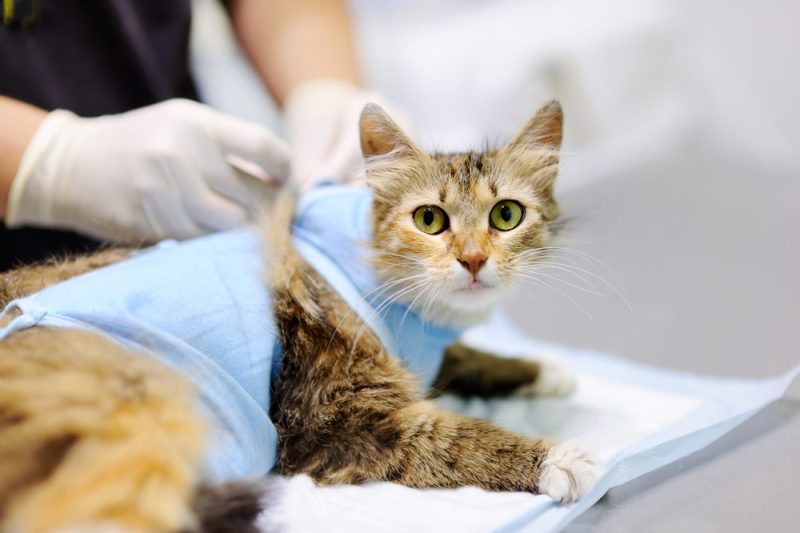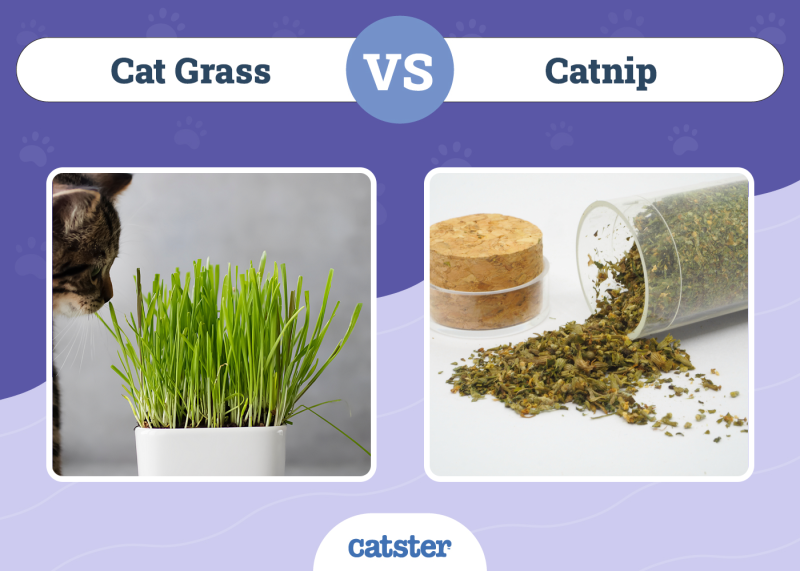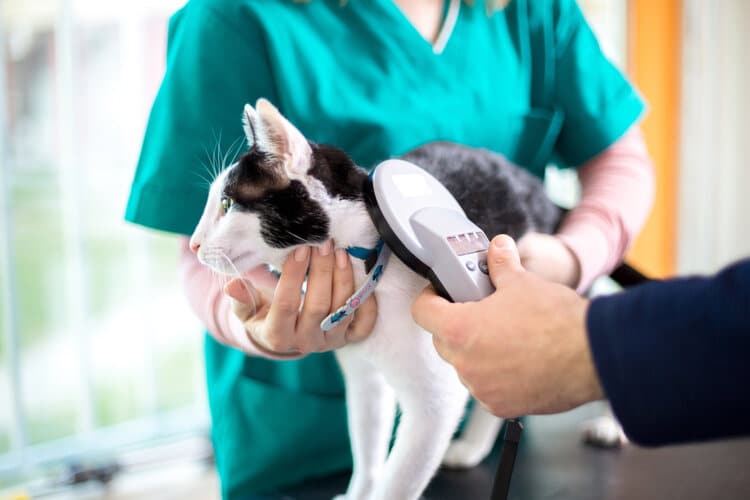Bugs aren’t just a nuisance for us humans. They will bite or sting anyone they deem a threat, including your innocent and beloved kitty. Your cat might one day be sniffing around your backyard when they gets a little too close to a curious-looking mound of soil, and suddenly, they’re covered in a swarm of angry fire ants.
Do you know what to do if your cat is stung or bitten by a bug? If not, you might want to keep reading because learning how to identify and treat bug bites can literally save your cat’s life one day.
Identifying Bug Bites
Before you can think about treating your cat’s bug bite, you need to identify what creature caused the bite.
1. Know Which Bugs Bite Where
Identifying where on the body your cat was bit will help you narrow down the list of prospective bugs.
- Fleas like to congregate and bite on the head, groin, neck, perineum, and base of the tail.
- Ticks prefer the head, face, ears, flanks, and limbs.
- Mites will either burrow deep and chew into your cat’s skin (burrowing mites) or enter the external ear canal (ear mites). The lesions that burrowing mite bites cause can be found almost anywhere on the body, but they most often prefer areas with minimal hair, like the armpits, ear margins, and groin.
- Ants and spiders will crawl onto your cat from any seated or standing position, so their bites will occur at the contact point. For example, if your cat walks across an ant-ridden patch of grass, ants may bite their feet. If they get ambushed by ants as they lounge, any part of the body touching the ground is at risk.
- Flying bugs like flies, mosquitoes, bees, hornets, and wasps have no preference on where they’ll bite, so all body surfaces are prone.
2. Recognize the Side Effects of a Bite

Every bug bite will produce a different side effect in your cat. Knowing what behaviors to look for will help you determine what bug caused the bite.
- Flea bites cause skin irritation, so you may notice your cat licking, chewing, or scratching the area where they were bitten. These bites can turn red, ooze, and swell. In addition, flea saliva contains antigens that cause an intensely itchy response, so your kitty may be incessantly scratching at the bite sight. The skin lesions caused by itching can cause redness and even hair loss.
- Tick bites will cause redness, which can turn into swelling and crusting over once you have removed the bug. As with fleas, tick saliva is highly irritating and can cause excessive scratching so you may recognize symptoms of itchiness like broken skin and hair loss.
- Ear mites will produce easy-to-identify symptoms in your cat, including excessive ear scratching, hair loss around the ears, brown discharge, ear blisters, or a dark waxy crust. Burrowing mites can cause side effects like restlessness, intense itching or scratching, excessive licking, patchy hair loss, swelling, or scaling.
- Fly bites can cause pain and swelling. It’s important to thoroughly inspect your cat if you suspect they’ve been bitten by a fly, as it may have laid eggs on your pet. These eggs will hatch in a few days, and the resulting larvae can burrow into the skin.
- Ant bites typically do not affect the whole body, only causing localized pain and swelling in the bite area. You may notice itching, lameness, or redness where your cat was bitten.
- Spider bites will cause different side effects depending on the species. Most spiders don’t produce venom, but the two groups responsible for the most medically significant bites are the black widow and brown recluse spiders. Black widow bites are moderately painful, with redness and swelling initially. Over the next several hours, more serious symptoms, such as cramping, vomiting, tremors, or muscle rigidity, may occur. Brown recluse bites, on the other hand, are often not painful at first. A blister may develop over the next 2 to 8 hours, resulting in a bulls-eye-shaped lesion that can eventually cause tissue death. You may notice other symptoms, such as fever and lethargy.
- Mosquito bites in cats cause much the same reaction as they do in humans. Your kitty might start licking, chewing, or scratching at the bite site. Hives, swelling, and redness can occur, too.
- Bee, hornet, or wasp stings can cause side effects like pain, swelling, hives, and redness. Your cat might vocalize their pain or start scratching at the sting site. Some cats can be allergic to the poison bees or wasps inject when they sting. It is essential to watch for signs of an allergic reaction, such as weakness, collapse, vomiting, difficulty breathing, diarrhea, and pale gums. This is a medical emergency that could prove fatal, so a visit to the vet is a must.
If you need to speak with a vet but can't get to one, head over to PangoVet. It's an online service where you can talk to a vet online and get the advice you need for your pet — all at an affordable price!

3. Know What the Bugs Look Like
The easiest way to identify a bug bite is to see the bug in action. If the bug is still on your cat, you can use our identifying guidelines below to determine which bug was the culprit.
Fleas are tiny, about the size of a head of a pin. They are dark brown and, while visible to the eye, they can be hard to identify. You might see flea dirt (adult flea feces) in your cat’s fur. Flea dirt looks like dark red to black specks.
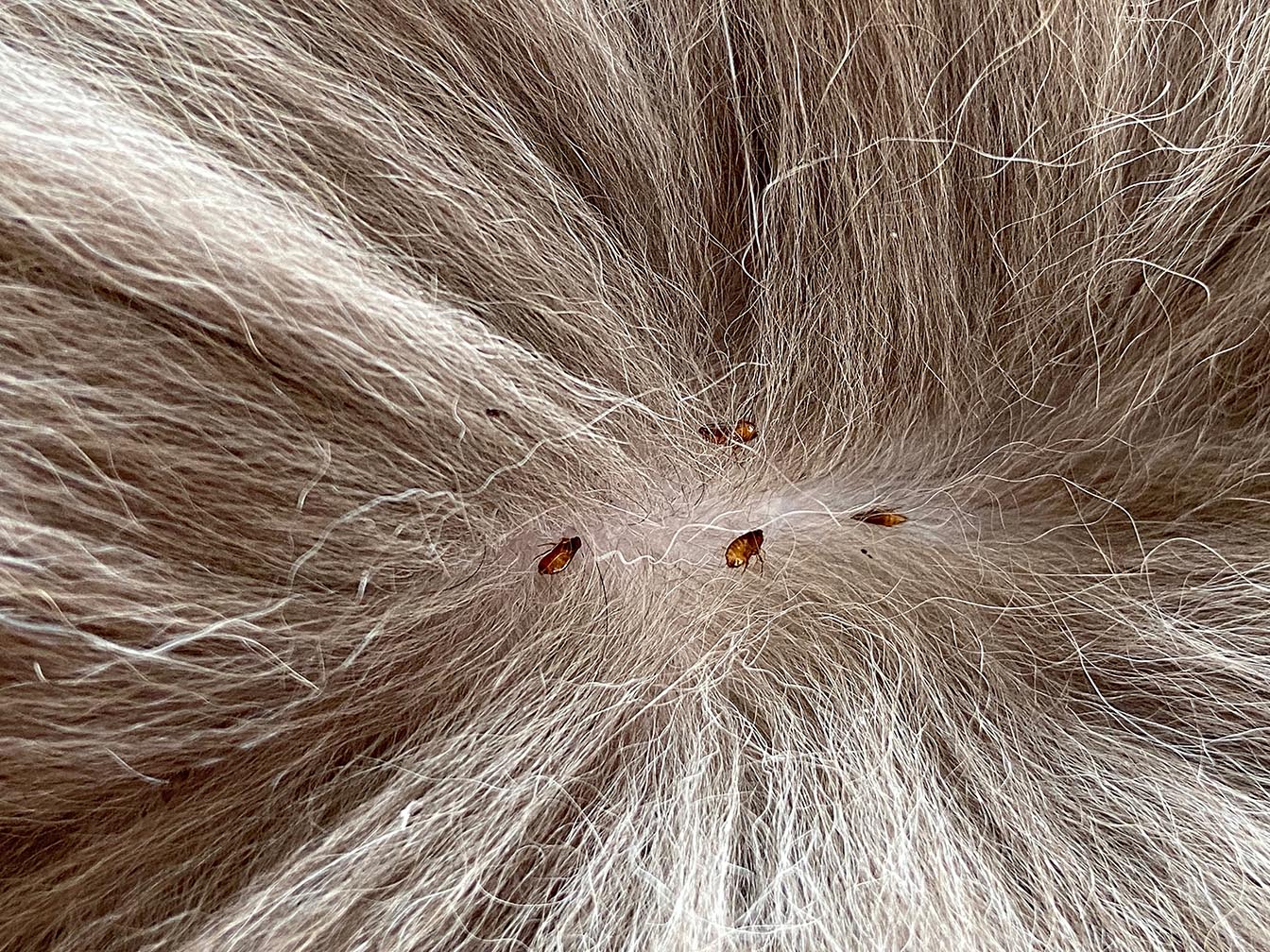
Ticks are tiny, typically less than 10mm, and tend to be round or tear-shaped. They will get large and swell once they start filling with blood.
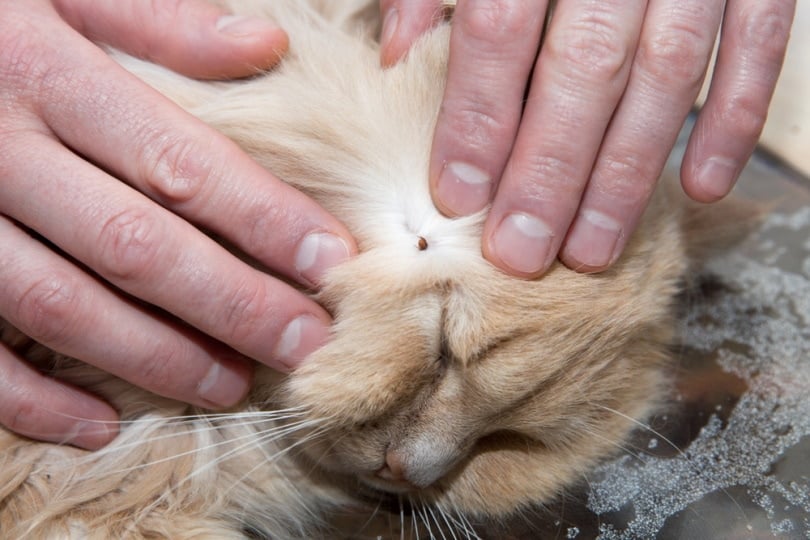
Ear mites are tiny insects that may appear as small white dots on your cat’s ears. They can be challenging to see with the naked eye. Burrowing mites will look like small, orange ovals.
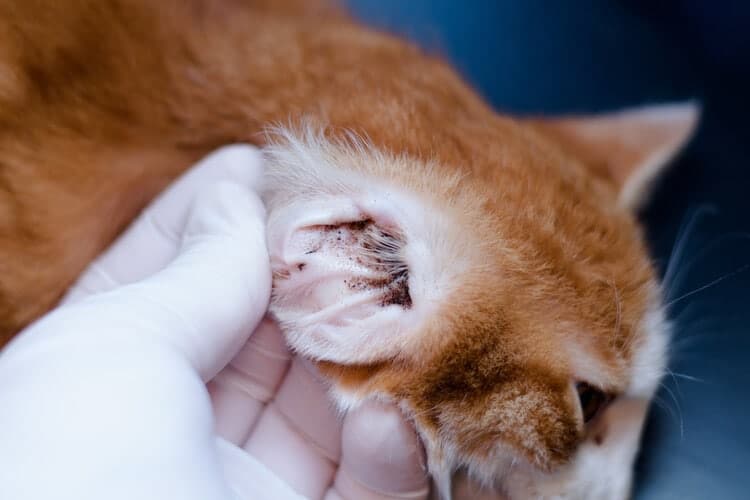
Everyone knows what a house fly looks like. Horse or deer flies, on the other hand, aren’t nearly as common as the house variety. Horse or deer flies can be up to 1.4-inches long with stout bodies and prominent mouthparts. Their eyes are very big and iridescent in color. Stable flies (sometimes also known as biting house flies) are the same size as house flies, but their abdomens have seven circular spots in a checkerboard pattern.
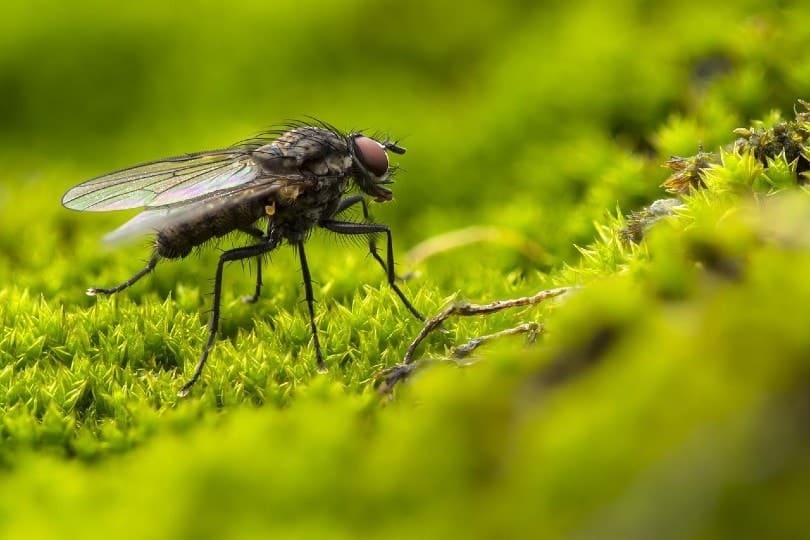
Black widow spiders are a shiny black color. Females are easily recognizable thanks to the red or orangey-red hourglass-shaped marking on the underside of the abdomen. Brown recluse spiders are yellow-brown with a violin-shaped marking on the back.
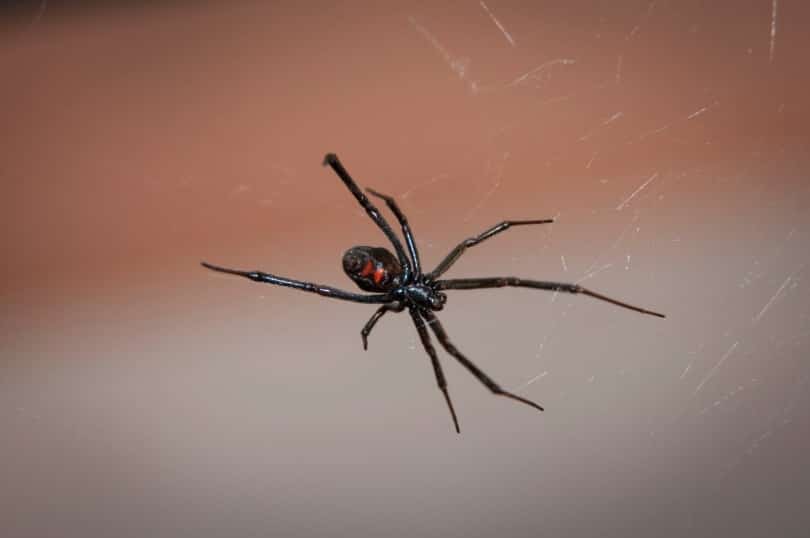
There are many types of ants, but not all biting ants are venomous. Fire ants are probably the most significant species of concern. They are reddish with hues that range from medium to black and are around 2-6mm long.

Mosquitos are small and fragile bugs that can vary in appearance depending on the species. Some are pale brown, while others are black with white stripes.
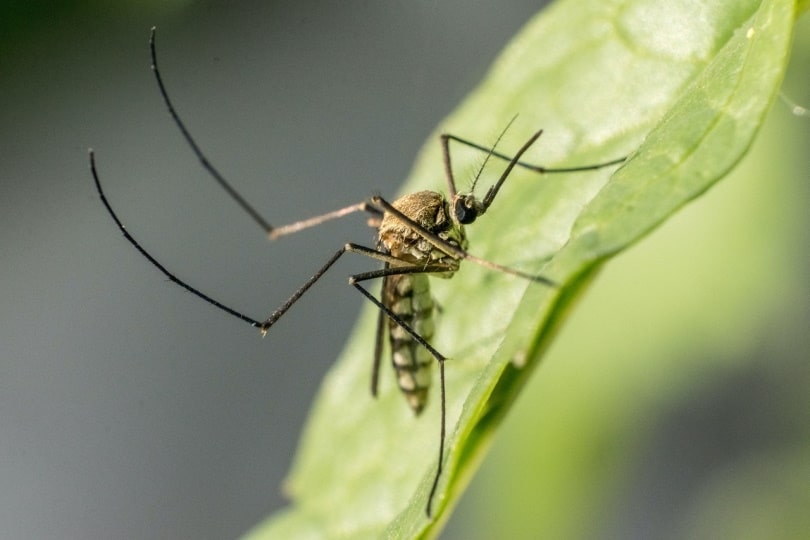
Differentiating between bees, wasps, and hornets can be difficult as they’re all black and yellow. To further complicate things, there are many different species of each, so it can feel like you need to be a bug expert to tell them all apart.
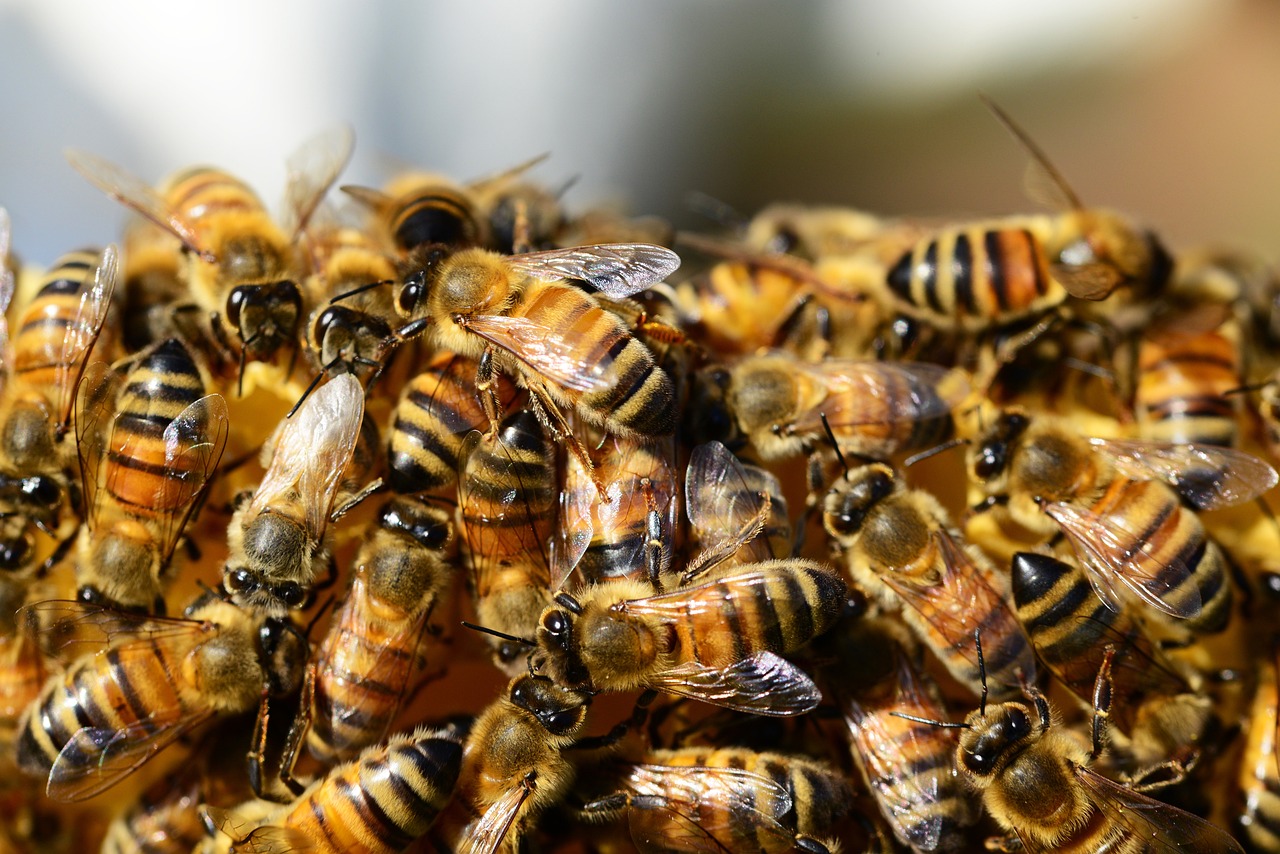
| Insect | Appearance |
| Bumble bees | Robust, round, black with yellow or orange bands on abdomen |
| Carpenter bees | Similar to bumble bees without the yellow abdomens |
| Honey bees | Fuzzy, brown with a banded dull yellow/brown abdomen |
| Paper wasp | Yellow and black stripes, orange antennae, smooth body |
| Yellowjackets | Black with yellow markings on the front of the head, yellow-banded abdomen, yellow face, dark eyes |
| European hornets | Large, bright yellow and black body, yellow legs, triangle markings, and black dots on the abdomen |
| Bald-faced hornets | Black body, white face, stout body |
Treating Bug Bites
Now that you know how to tell what bug bites your cat, it’s time to find out what you need to do to provide relief for your kitty.
1. Remove Any Foreign Objects
Bees are the only bugs that will leave a stinger in their victim, so if your cat has been stung by a bee, you need to find and remove it. Abandoned stingers will keep secreting venom into the victim so getting rid of it as soon as possible is essential.
To remove the stinger, scrape a credit card over your cat’s skin and flick it off. Do not use tweezers, as they can squeeze the stinger and secrete more venom.
2. Address the Swelling
If your cat is experiencing swelling at the bite or sting site, a cold pack or compress can help provide relief. In a pinch, a bag of frozen vegetables will also work. Leave the cold pack on for 10 minutes. Ensure you have a protective layer between the cold pack and your cat’s skin to prevent ice burns. We recommend wrapping the cold pack in a towel.
3. Prevent an Allergic Reaction
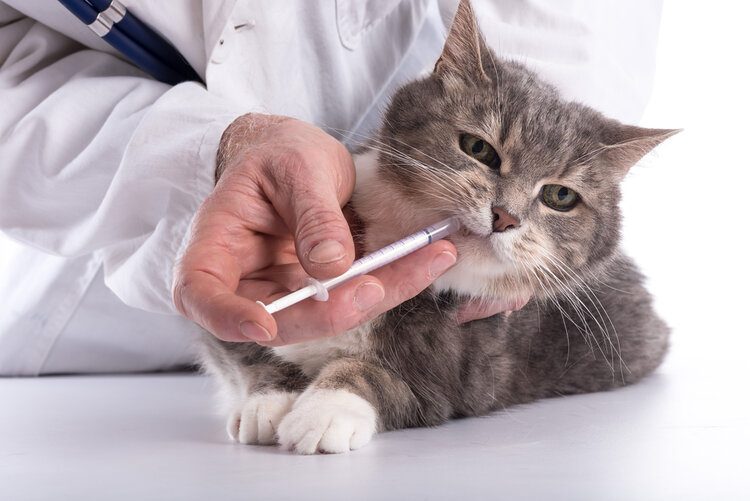
Oral antihistamines like Benadryl (diphenhydramine) can relieve the itchiness your cat can feel after a bite. This medication is safe for use in cats, but you should consult a vet before giving a dose to your pet.
You can also use hydrocortisone to prevent inflammation and itchiness. Hydrocortisone can be applied topically and comes in many forms, such as creams, gels, foams, or shampoos. As with antihistamines, you must speak to a vet before administering them. Many vets will not recommend a topical treatment as there is a chance your cat will ingest it during their next grooming session.
4. Soothe the Site

A baking soda and water paste can provide soothing relief for your cat’s bite or sting. Take a tablespoon of baking soda and add just enough water so that the two form a sticky paste. Then, use your finger to smooth the paste over the bite or sting site for irritation relief.
5. Prevent Scratching Trauma
An insect bite or sting can feel very itchy for your cat. Excessive itching can cause skin trauma, including wounds and infections, which can delay the healing process and become an even bigger problem. Though your cat is unlikely to enjoy it, an Elizabethan collar (AKA the cone of shame) can prevent them from licking and scratching the wound.
6. Monitor
You know your cat best. If they start behaving strangely or out of character after being bitten or stung, you should contact your vet for advice.
When to Go to the Vet
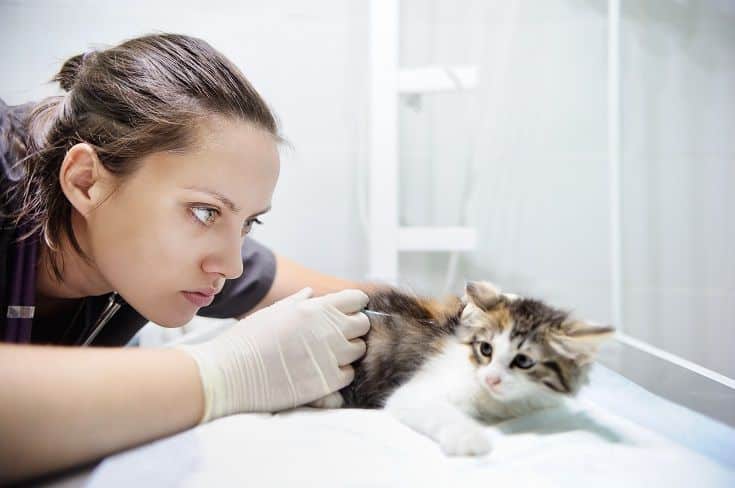
A single bite or sting is of less concern than multiple stings or bites. However, if your cat has been attacked by a swarm of wasps or fire ants, seek help from a vet immediately. Swarms of bugs will produce larger doses of toxins that can cause an allergic reaction, leading to life-threatening complications like anaphylaxis.
- Excessive drooling
- Wheezing
- Disorientation
- Loss of balance
- Swelling of the lips or tongue
You should consult a vet as soon as possible if a venomous spider or a tick has bitten your cat. Some spiders have more potent toxins that can be very harmful, and some species of ticks can carry Lyme disease.
Final Thoughts
Though they may be small, bugs can produce painful and deadly side effects when they bite or sting. Since your cat can’t use words to tell you what’s wrong, you should be careful when letting them spend any amount of time outdoors. Some bugs will attack unprovoked, and the last thing you want is for your beloved kitty to feel the wrath of a swarm of angry hornets.
We always recommend reaching out to a veterinary team for advice if you are unsure about your cat’s health. Most bug bites result in easy-to-manage symptoms, but if your pet has an allergy or has been stung or bitten multiple times, you may need emergency care.
- Related Read:Â Botflies in Cats: Causes, Signs, & Care
Featured Image Credit: AlexanderDubrovsk, Shutterstock




